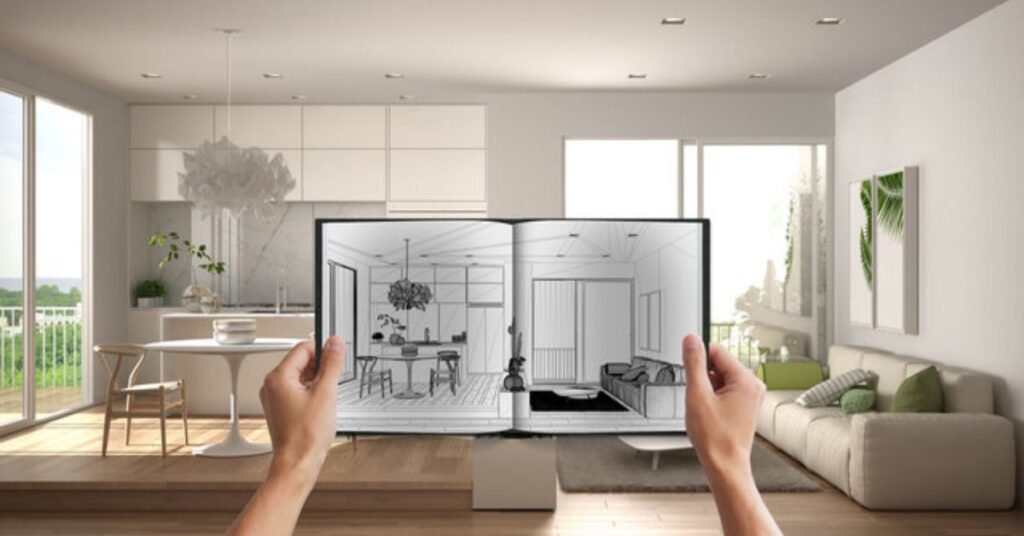Gone are the days when libraries were seen only as silent sanctuaries filled with dusty shelves and stern silence. Today, modern libraries are community hubs, technologically equipped learning environments, cultural incubators, and architectural marvels. The journey from sketch to site for a modern library is a story of evolving needs, multidisciplinary collaboration, and visionary design. It’s where function meets symbolism, and architecture becomes a bridge between knowledge and society. This blog traces the complete journey of how a modern library is conceived, designed, and realized—starting from a mere sketch and evolving into a dynamic, living space. 1. The Brief: Understanding Community Needs Every modern library begins not with blueprints, but with questions. Who is it for? What purpose will it serve in the next 10, 20, or 50 years? Libraries today are designed for diversity—not just in books, but in activities and users. Architects, urban planners, and library consultants gather input through community engagement workshops, surveys, and discussions with stakeholders. In this initial phase, planners focus on understanding: This brief becomes the foundation for the first design sketches. 2. The Conceptual Phase: Sketching the Vision Armed with insights, architects move to the conceptual design phase—where imagination meets purpose. Sketches, diagrams, and massing models are produced to explore layout possibilities, circulation patterns, and visual impact. At this stage, design is fluid. The aim is not finality, but exploration. Designers often seek to symbolize the library’s ethos—whether it’s openness, inclusivity, innovation, or heritage. Take, for example: Modern libraries are no longer static …
From Sketch to Site: A Modern Library’s Journey

Gone are the days when libraries were seen only as silent sanctuaries filled with dusty shelves and stern silence. Today, modern libraries are community hubs, technologically equipped learning environments, cultural incubators, and architectural marvels. The journey from sketch to site for a modern library is a story of evolving needs, multidisciplinary collaboration, and visionary design. It’s where function meets symbolism, and architecture becomes a bridge between knowledge and society.
This blog traces the complete journey of how a modern library is conceived, designed, and realized—starting from a mere sketch and evolving into a dynamic, living space.
1. The Brief: Understanding Community Needs
Every modern library begins not with blueprints, but with questions. Who is it for? What purpose will it serve in the next 10, 20, or 50 years? Libraries today are designed for diversity—not just in books, but in activities and users. Architects, urban planners, and library consultants gather input through community engagement workshops, surveys, and discussions with stakeholders.
In this initial phase, planners focus on understanding:
- Demographic needs (children, students, elderly, researchers)
- Technological infrastructure (digital resources, makerspaces)
- Social engagement (collaborative zones, cafés, event areas)
- Sustainability and accessibility goals
This brief becomes the foundation for the first design sketches.
2. The Conceptual Phase: Sketching the Vision
Armed with insights, architects move to the conceptual design phase—where imagination meets purpose. Sketches, diagrams, and massing models are produced to explore layout possibilities, circulation patterns, and visual impact. At this stage, design is fluid. The aim is not finality, but exploration.
Designers often seek to symbolize the library’s ethos—whether it’s openness, inclusivity, innovation, or heritage. Take, for example:
- Seattle Central Library (Rem Koolhaas/OMA): Designed as a “books spiral,” emphasizing fluid movement through knowledge.
- Stuttgart City Library (Yi Architects): A cube with a stark white central atrium, symbolizing contemplation and mental clarity.
Modern libraries are no longer static boxes—they’re experiential environments.
3. Site Selection and Integration
While design concepts evolve, site analysis occurs in parallel. Choosing the right site is critical: Is it central and accessible? How does it connect to public transportation or green spaces? How will natural light, noise levels, and surroundings influence the design?
Site-specific challenges shape the final form of the library:
- An urban setting may require vertical solutions and multi-use integration.
- A campus library may be designed for seamless flow between buildings and disciplines.
- A rural library might focus on blending with natural landscapes and community traditions.
Topographic surveys, environmental impact assessments, and zoning reviews guide the refinement of the early design.
4. Schematic Design: Giving Shape to Ideas
This phase transforms ideas into architectural form. Floor plans, elevations, sections, and 3D models are developed. Key considerations include:
- Spatial zoning: Separating quiet areas from collaborative ones.
- Daylight and ventilation: Maximizing comfort and energy efficiency.
- Technology integration: Planning for digital labs, automated systems, and smart shelving.
- Structural logic: Determining materials and structural systems that balance aesthetics, durability, and cost.
At this point, architects collaborate with structural engineers, sustainability experts, acoustic consultants, and landscape designers to co-author the evolving design.
5. Design Development: Detailing the Experience
Once the core design is approved, attention shifts to details. Furniture layouts, material palettes, lighting design, signage systems, and finishes are fine-tuned. The library begins to gain personality. Each space is tailored to user needs:
- Reading Rooms: Warm, well-lit, with acoustic insulation.
- Children’s Zones: Vibrant, playful, flexible.
- Study Cubes: Soundproofed, with personal tech access.
- Event Spaces: Modular seating and AV equipment.
The focus here is not just function but experience—how users will feel, move, interact, and return.
6. Construction Documentation and Permits
This technical phase involves creating detailed drawings and specifications used for bidding and construction. All elements—structural systems, MEP (Mechanical, Electrical, and Plumbing), fire safety, IT cabling, green building components—are meticulously documented.
Regulatory approvals and permits are obtained. For public libraries, this often includes rounds of review by city planners, fire departments, accessibility boards, and green building certification bodies like LEED or GRIHA.
7. Construction Phase: Realizing the Design
With contractors selected, the library begins to take physical form. Foundation work, structural framing, roofing, and façade installation happen in stages, followed by interior works like flooring, lighting, and millwork. Architects stay involved through site visits, progress reviews, and quality control.
Modern construction technologies—like precast panels, modular systems, and BIM (Building Information Modeling)—ensure coordination and efficiency. Delays, budget constraints, or design adaptations are inevitable, but the collaboration between architects, builders, and the client team ensures vision is preserved.
8. Interior Setup and Technology Integration
As construction wraps up, attention turns to interiors. Modular shelving, flexible furniture, ergonomic seating, acoustic partitions, and lighting systems are installed. Libraries today are as much about data as books—thus, digital infrastructure becomes central:
- Wi-Fi mesh systems
- RFID-based book checkouts
- Interactive screens and media walls
- Makerspaces and digital studios
Smart design allows the library to evolve with technology—cabling systems are hidden but accessible, walls are reconfigurable, and furniture is often mobile.
9. Testing, Handover, and Training
Before doors open, the building undergoes commissioning—testing HVAC systems, lighting levels, emergency systems, and acoustics. Accessibility and safety standards are verified. Staff are trained in managing technology systems, spatial zones, and emergency protocols.
In parallel, programs are planned: workshops, exhibitions, community events, book fairs. The library is no longer just a place—it’s a platform for engagement.
10. Inauguration and Life Beyond the Building
The opening of a modern library is a community celebration. It marks not just the completion of a structure, but the beginning of its social life. Libraries today measure success not just by footfall but by interaction—how people use, shape, and co-own the space.
Post-occupancy evaluations help understand what works, what doesn’t, and what can be improved. The best libraries are those that adapt—offering evolving experiences without needing major redesigns.
Conclusion: Architecture in the Service of Knowledge
The journey from sketch to site for a modern library is as much a story of design as it is of purpose. Each stage—from conceptual sketches to construction and activation—is guided by a deep respect for users, knowledge, and the community. It’s not just about making buildings—it’s about making meaning.
In an age of digital everything, libraries stand as beacons of access, equity, and quiet revolution. And every modern library reminds us: knowledge needs a space to live, grow, and inspire.


